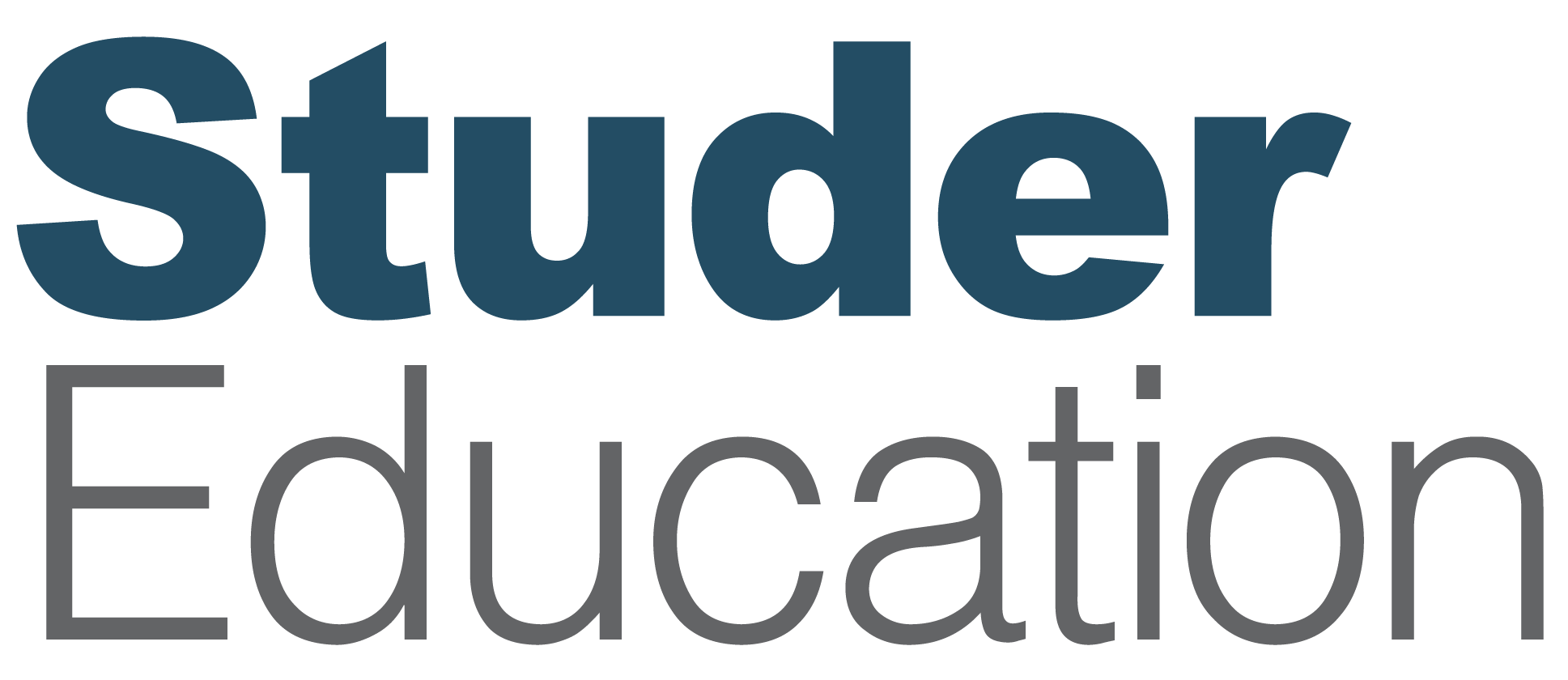
In this live episode, Dr. Janet Pilcher welcomes Dr. Cory Strasser, Assistant Superintendent of Educational Services for Rapid City Area Schools. In a special conversation recorded at the Destination High Performance K-12 Leadership Conference, Dr. Strasser shares his proven approach to building a “people first” culture. Listen as he reveals how his commitment to intentional, values-based leadership, including strategies like feedback loops and rounding, has led to significant gains in student, parent, and employee experience.
This episode addresses questions such as:
- What does it mean to be a leader who puts people first?
- How are intentional, follow-up conversations more impactful than data alone?
- Why is gratitude a key driver of positive culture and organizational excellence?
Latest Episodes
Cory Strasser: But that is the essence of what we’re doing and is trying to build trust, trying to build systems that reflect opportunities for people to feel valued, to feel heard.
[Intro music plays in the background.]
Introduction
Janet Pilcher: Hello everyone, welcome to the Accelerate Your Performance podcast. I’m your host, Dr. Janet Pilcher, founder and president of Studer Education. For the next few weeks, I’ll be bringing you a series of three unique episodes recorded live and in person. For those of you who attended our Destination High Performance K-12 Leadership Conference this past summer, this will be a great way to revisit some of those insightful discussions. And for those of you who couldn’t be there, this month you get a front row seat to some of the impactful takeaways from the event.
This week I’m sharing my conversation with Dr. Cory Strasser, Assistant Superintendent of educational services for Rapid City Area Schools. With over 26 years of experience, Coryy is a people-first leader who has a values-based approach to driving student outcomes and organizational excellence.
Today you’ll hear us talk about the core principles of putting people first and what that means for improvement work. You’ll learn how his commitment to this approach through strategies like feedback loops and rounding has led to significant gains in student, parent, and employee experience.
So let’s get started.
Interview
Janet Pilcher: Welcome to the show, Cory.
Cory Strasser: Thanks for having me today, Janet.
Janet Pilcher: It’s so great to connect with you, and let’s start. Let’s start with we often say “people first.” People first is core to our improvement. So talk to us about what that means.
Cory Strasser: Yeah, people first is essential in any organization especially education organizations, and to me it’s a, it’s a leader stance and it’s a way to just kind of take both philosophy and practice around people development. How do we help people learn? How do we help people grow?
I’ve often said to the leaders at RCAS, you know, “We’re learning leaders leading a learning organization.” And that is essentially about the growth and development of our people from top to bottom, and of course, we really want to be centered on our students and that, that is what drives the development across the organization. So people first is really being relational and, you know, we don’t often think of “customer service” in education as a phrase that you use, but that is the essence of what we’re doing and is trying to build trust, trying to build systems that reflect opportunities for people to feel valued, to feel heard, and in that way people are supported. So ultimately, people first drives from being student-centered but helping, helping people grow at every level of the organization regardless of their role and responsibility. And that’s not just teachers. We have awesome supports, support staff. So it’s a very system approach to building people up.
Janet Pilcher: Yeah, and Cory I like what you said about, you know “customer service” or we don’t tend to use the word “customer service.” But sometimes when we think about people first, there’s something I tend to always think through. It’s people first and service is everything. And it’s the combination of those two things. It’s hard to talk about people first if we’re not talking about really providing the best that we can, the best service that we can to the people that we serve. And I know, we talk about feedback loops. We’ve heard it throughout today. We talk about feedback loops as key to engaging people in conversations. Talk about how the rollout of your employee engagement survey led to your improvement results and really use those feedback loops.
Cory Strasser: Yeah, so we were very fortunate in our survey results. We saw a lot of, a lot of improvement across the board, and I think what really drives that is you have to have a committed team. And we have a very committed leadership group both at the district level and, and in our buildings, so I think, I think that’s, that’s important. They all committed to the feedback cycle and really learning and carrying that feedback cycle out. We looked at the actions that come from the surveys and taking specific actions that, in that rollout, I’ve always felt that you do surveys. Too often they can be just put on the shelf or they can, you can check a box with it.
Janet Pilcher: Right.
Cory Strasser: And that really does a disservice to getting feedback. We want to hear from people. We want to improve based on that feedback, but what really drove us to I think better results on our employee engagement survey was that we went back to the people. So we looked at it, our leaders analyzed, they started utilizing that key question of “what does better look like?” Trying to seek clarity. But then they went back to certain stakeholders and in that employee engagement it’s tough going back and talking to certain groups and really asking for clarity and asking them, you know, “you took the survey but now what does that better look like?” And that simple step right there? I’ve always felt as a leader in my previous organizations was really missing. But doing that piece and then creating the actions from there. And of course in an organization, if you say you’re gonna do something, you have to do it. So when you, when you lay out those actions, where are they embedded, and how are we moving on that? So that communication process as part of the feedback cycle, and it’s not a holistic feedback cycle yet for us. We’re moving there.
Janet Pilcher: Yeah.
Cory Strasser: But that step in and of itself was was very key because we’re having those conversations. And I think that has helped us in the last two years really engage with our people,
Janet Pilcher: Yeah, and as you’re talking, you know, when we talk about surveys, you’re right. We’ve done surveys forever and ever and ever, right, Cory? And when we really look at it, we tend to say it’s that survey process that you’re talking about, really talking to people about the data. And it doesn’t, it can be student data, can be survey data, but it’s those conversations that you all have engaged in where you’re really taking that information and building your actions and then beginning to monitor that progress so people get to see that their input matters.
Cory Strasser: And their input does matter because the surveys are an accountability measure and we don’t know often see it that way, but it’s a way for people when they give their feedback, they’re trying to hold us accountable to what they say, so we have to be responsive to that. And having a systematic way through the feedback cycles is a much better way to communicate and really take what people are telling us in our organization and putting that into action and actual steps.
Janet Pilcher: Yeah, so good Cory. So, you know as we’re talking about people, getting their input, we also talk about creating an emotional bank account. I said it this morning, I think, and as it was coming to mind, and as we think about survey, the rollout process, another tactic that’s key and that is rounding. It’s a key strategy for doing that. What does that look like for you all and what impact has that had?
Cory Strasser: So if I could just take a quick step back as a principal, you know, we’re very relational. We’re constantly talking to our staff, to our students, to our parents. And when you think about, you know, asking certain questions, which rounding is very simple, it’s different to ask specific questions in a systematic way versus having relational conversations where I’ve often felt, “oh yeah, I’m talking, I know what’s going on and I can respond.” But that’s not a way to get real results in the end. It always fell flat.
So in 2021 was the first time I was introduced to rounding and started kind of thinking more systematically about it. And then when I came to RCAS, we really, I used it as a way to start getting familiar with the school district and the principals that I was working with. So that was kind of my easy way in. And then it just started snowballing from there because of our work with Studer and how they supported the systematic feedback cycle approach of which rounding was a big part of. So that was big.
And then, you know, if I can lean into the gratitude piece. So when you ask, is there somebody that I can support or that I can recognize on your behalf, that is huge. And in a system, that people want that.
Janet Pilcher: Yeah.
Cory Strasser: And when you’re not doing it, it’s very evident. So, so that was a key, I think, to getting people to see broader across the organization that we can have better communication and that we can uplift each other through a simple process around. So that’s how we got started. And then we started embedding it more this past year with our principals. We had some expectations around it. It’s becoming part of our culture. And it’s somewhat organic because I looked at it and I said, we’re going to focus on the 30- 90- with our new staff.
And we’re going to focus on the first part of the year. You have to have rounding conversations with everybody in your building. And then trying to be respectful of principals’ time and what leaders have on their plates. You know, the second half of the year is more about surveys and rollouts. So we focused on that. But I had many principals come back and say, “yeah, I’ve continued doing the rounding,” and they started with the stoplight reports based on, again, our work with Studer and trying to use that to organize how we moved on our rounding. So we’ve really built in a short amount of time, I think, some really good processes as part of that feedback cycle.
Janet Pilcher: Yeah. And two things you’re talking about, survey, survey rollout process, getting input, the rounding and rounding process and getting that input. And it’s intentional, Cory. What you’re doing is intentional. It’s not just, “hey, I’m going to go talk to people,” but it’s really intentional in terms of what you’re doing to build that people first environment.
So talk a little bit. You’ve had the student, parent, caregiver, and employee experience surveys all increased. So now you’re seeing results from it, even in a short, relatively short period of time. So, and you’ve been in a year of transition. You served as interim superintendent through a year of transition. So what do you attribute the difference in those results as you’ve looked back over the past year?
Cory Strasser: It’s really hard to pinpoint in all reality. I think, first of all, you have to have really great leaders across your organization who are committed, who understand what our strategic plan is, how we’re using our pillars to drive improvement. We started doing some work on short action cycles, and we’re learning how those can be really supportive in helping us stay focused and true to our strategic plan. So we’ve got some of those things in. So the team element, super important.
I think as a district, like I said earlier, if you’re going to do something and you say it, then you better follow through. So we really tried to follow through on the things that we said we’re doing. I think leading with a student centered approach and constantly talking about our students and how we can move them and support them. That will always be at the forefront of anything that I’m leading.
So I do think the communication and that came through rounding was the key driver and really leaning into that process because of the communication we were able to have. And it’s a visible process. If you’re doing it right, so the people in your organization can really see what you’re doing.
If you manifested in a stoplight report and you bring that back to your staff and you’re showing that, that matters. So I think those are the things that were the keys to some of the success we had.
Janet Pilcher: Yeah. Well, rounding is, rounding and engaging in conversations that are intentional. We’ve learned over the years, and there are various ways to do that. We can manage to it in a simple way of just building that relation round or look at rounding as we change. And one of the things that we found, if I, but we would go back and look at the podcast interviews that I’ve had, you know, I’d say 80% of them are gonna, of the leaders are gonna always pinpoint to rounding, even if we’re talking about it or not. And it’s that powerful.
So thank you for doing it for one. Thank you for being intentional. Thank you for really caring about your people and leading that, Cory. So as we close today, let’s think about, um, we’ve been honored to partner with your district for two years. What do you know about leading in this way, you know, that maybe you wish you had started with, you know, just a reflective part of your leadership?
Cory Strasser: Well, like I said, with the leaders in our district, I always reference being a learning leader. And that’s part of continuous improvement, trying to constantly be better today than I was yesterday. So when I reflect on this approach that we’ve taken those last two years, you know, really, data without specific actionable steps is really not beneficial. And it really erodes trust in your organization. So that’s something that I’m very cognizant of.
I also think the little things matter. And it’s easy to gloss over the little things. This past year, as a, the interim superintendent, it was easy to gloss over certain things and try to figure out what do I need to prioritize. But I had to come back to what are those little things that still matter the most and what can really move our organization and the components of the feedback cycles.
The feedback cycle is really, I think, instrumental in what I’ve learned. And I think we’re just scratching the surface. We’ve talked a lot about rounding, but learning how to utilize the stoplight report better, the pulse checks to really gauge where are we, and are we doing the things that we said we’re going to do. So there’s a lot of little pieces yet that I think we’re just scratching the surface on. But that’s, that’s what I really learned is those things do matter and how do we carry those out with fidelity?
Janet Pilcher: Yeah, Cory, thank you so much. I know you had a heavy lift last year as you were making that transitional point of the interim superintendent and really providing your district with unbelievable support. So I know there are many people who thank you for doing that. And not only did you do that, but you did that with great intention as a leader and you’re taking what you’ve learned and really moving forward and continuing that with the people. And putting people first. You’re a great example of that. Thank you very much for your time today.
Cory Strasser: Thanks, Janet.
[Applause]
Conclusion
[Outro music plays in the background.]
Janet Pilcher: Thank you, Cory, for your dedication to a people first approach. This is an excellent reminder that when you truly value every person, results will follow. What I’m also taking away from this conversation is that it’s the intentional follow up conversations, not just the data that build trust and show people their voice matters.
I also appreciate you highlighting the gratitude piece within rounding. Like you said, it really is a key driver of positive culture. Thank you for committing to that and modeling what it means to be a learning leader.
This week, let’s commit to having at least one intentional follow up conversation with a team member. It’s not just about the data, but about showing them their voice matters.
That’s all the time we have for this episode of the Accelerate Your Performance podcast. I look forward to seeing you next time as we continue to work together toward organizational and leadership excellence. Have a great week, everyone.
Featured Guest

Dr. Cory Strasser
Assistant Superintendent of Educational Services • Rapid City Area Schools, SD
-
Janet Pilcher President








